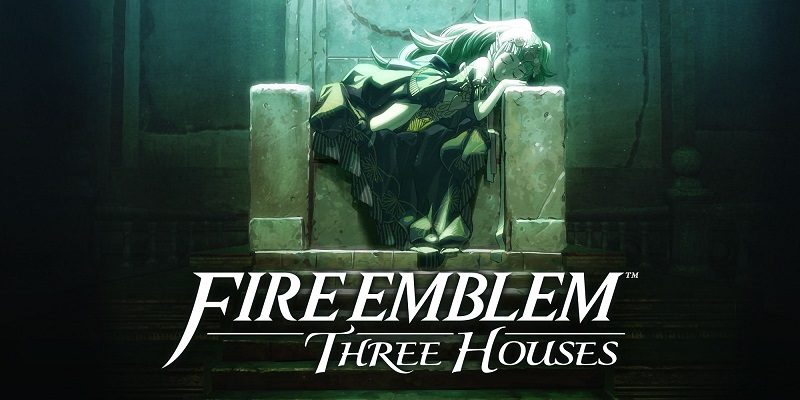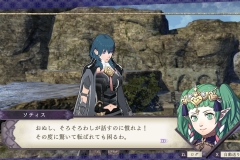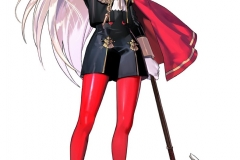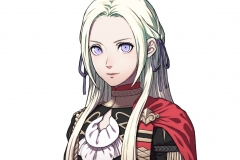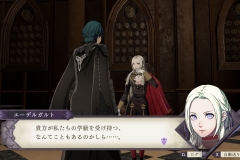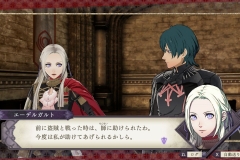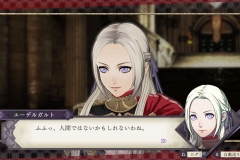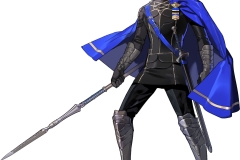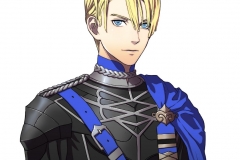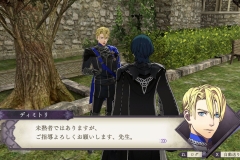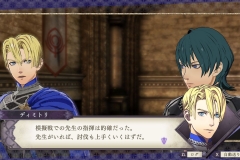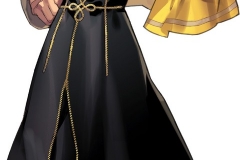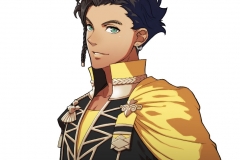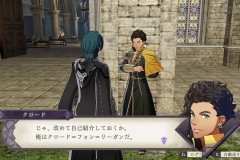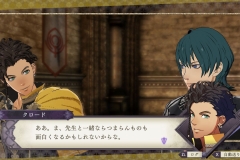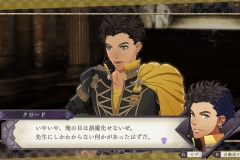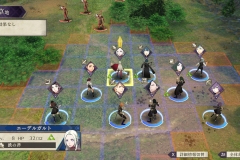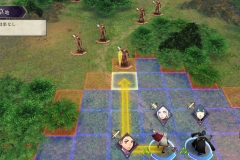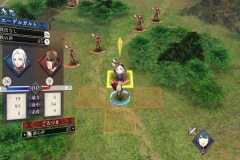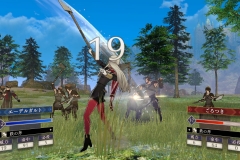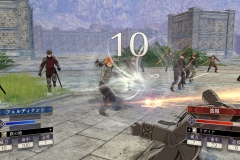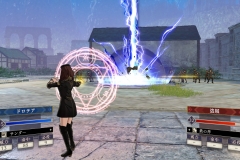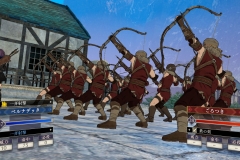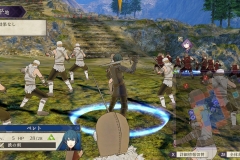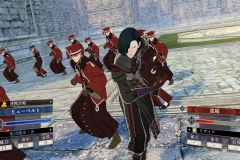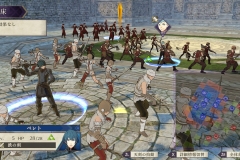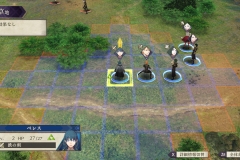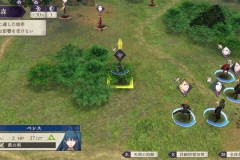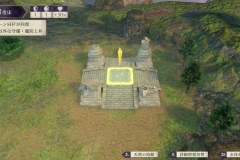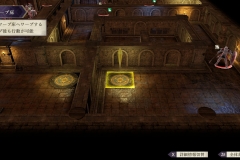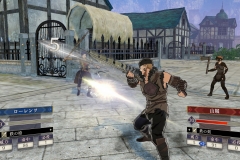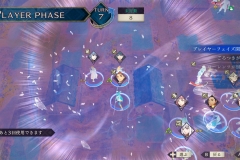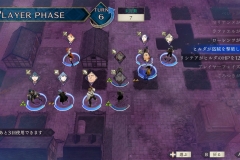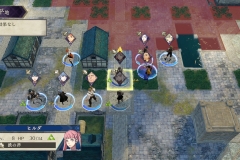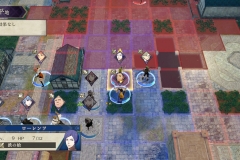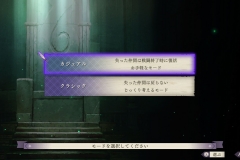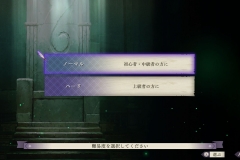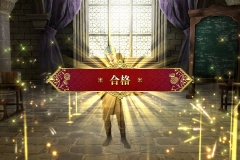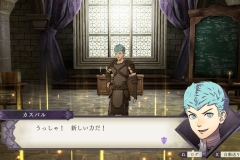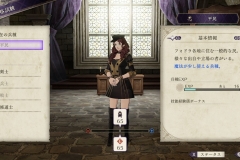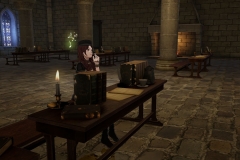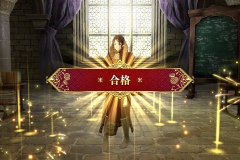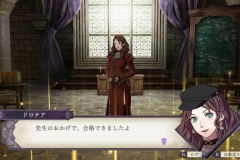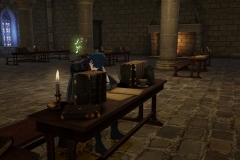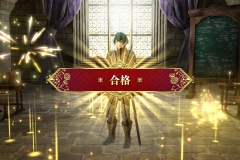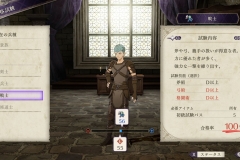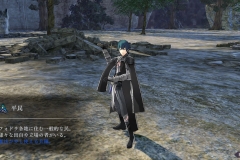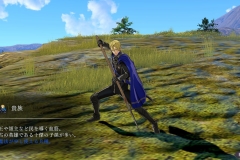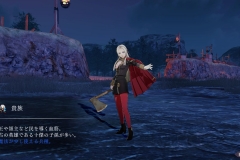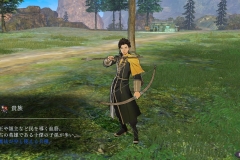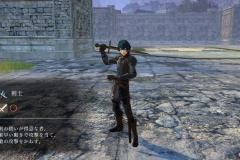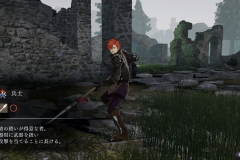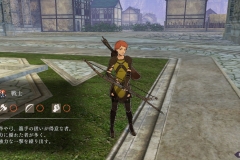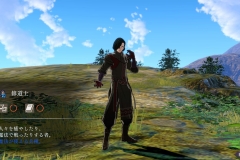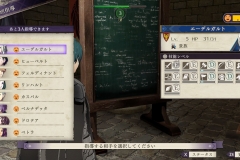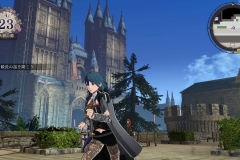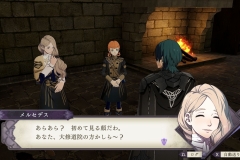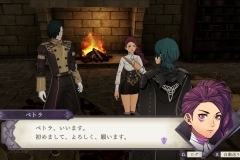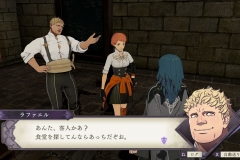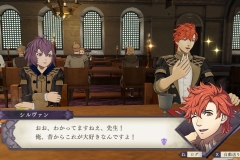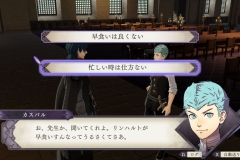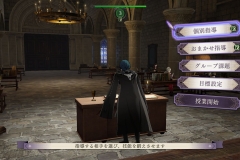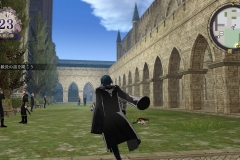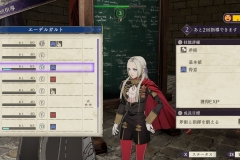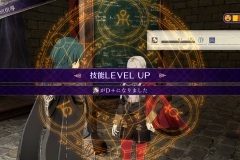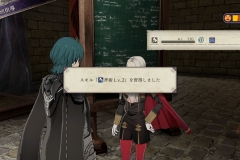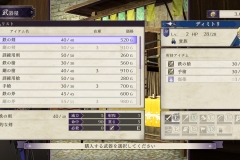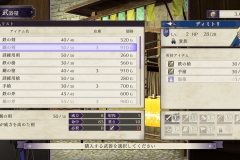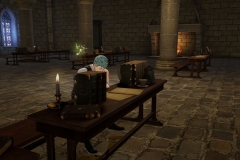Fire Emblem: Three Houses – Tons of details and pictures (story, characters, gameplay systems)
Fire Emblem: Three Houses is featured in the latest issue of Famitsu magazine, which is now available in Japan. It has a rather lengthy article about Fire Emblem: Three Heroes, filled to the brim with details about the story, the characters, gameplay systems, and more.
Important note: the terminology below is mostly translated from Japanese, many of the terms used most likely differ from their official English counterpart.
Fire Emblem: Three Houses – Story
Armies covering the plains. An intense battle. And fighting is over. Then, a mysterious girl appears.
Every night, the protagonist (who is part of his father’s mercenary band) has a mysterious dream. One day, after having that same dream several times, they encounter young people being attacked by bandits. They throw themselves in front of the young people in order to protect them, and that’s when time suddenly stops.
Then, the girl they saw in their mysterious dream suddenly appears in front of them. She has the power to rewind time, and uses it to save the protagonist. She then lends her power to the protagonist, before disappearing.
It turns out the three young people were actually students at the academy, at the Garreg Mach Monastery, and not just any students… the successors of the three main powers of Fodlan, no less. The protagonist’s little bout of heroism doesn’t go unnoticed, and they’re invited to become a teacher at the academy.
And so that encouters drags the protagonist in a rather strange fate…
Fire Emblem: Three Houses takes place on the continent of Fodlan. It’s controlled by three powers:
- Adrestian Empire: it has been controlling the southern half of the continent for more than 1000 years;
- Holy Kingdom of Faerghus: Kings and Knights have been ruling the cold lands of the northern half of the continent;
- Leicester Alliance: a league of powerful nobles, who have been controlling the eastern side of the continent.
Before, those three powers were at odd with each other, and war was tearing the continent apart. But nowadays, the Fodlan is at peace, with the three powers keeping each other in check.
At the very center of the three powers, the Garreg Mach Monastery can be found, which is home to the Church of Seiros. That’s also where the Officer’s Academy is located: it’s a place where the future leaders of the three powers go study and train in order to become leaders.
Fire Emblem: Three Houses – Characters
As mentioned above, the protagonist becomes a teacher at that very academy. The students are divided in three houses, led by none other than the successors of the leaders of the three powers, who are destined to rule over their country. Your guidance will have an influence not just on your students, but also on the very fate of the Fodlan continent…
Here’s some of the characters revealed so far:
- Protagonist
The protagonist was originally making a living as mercenary, but then they realised that they had knowledge to pass on, and so became a teacher at the academy. Their mother had already passed away, which is why they were living with their father, who used to be at the head of the Knights of Seiros.
As in previous Fire Emblem games, you can choose the gender of the protagonist at the beginning of the game. Of course, there’s no differences between the male and female protagonist, gameplay-wise (both have the same abilities).
- Jeralt (voiced by Akio Ootsuka)
The protagonist’s father, with a legendary reputation, and known as the strongest Knight that has ever graced the Church of Seiros, no less! After the protagonist is invited to the academy to take the position of teacher, he comes with him and becomes a knight again.
- Sothis (voiced by Tomoyo Kusawa)
A mysterious girl who ends up saving the protagonist during a fateful night. She has lost her memory, and for some reason, only the protagonist can see her.
At the beginning of the game, you have to choose between one of the three houses at the academy. You will then go on to teach the students that belong to that very House, and not the others, so you have to think carefully about which one to choose!
Here’s the three Houses and their leaders:
- Black Eagles
Among the three powers ruling the Fodlan continent, the Adrestian Empire is the one with the longest history. People from there are usually more skilled with magic than weapons.
The leader of the Black Eagles is Edelgard von Hresvelg, who also happens to be next in line to become Empress. She’s voiced by Ai Kakuma. She’s said to be quite the talented and signified individual.
- Blue Lions
The House tied to the Holy Kingdom of Faerghus. Its leader is Dimitri Alexandre Blaiddyd (voiced by Kaito Ishikawa), Prince of the Kingdom and future King. He’s said to be quite the polite young man, and the very embodiment of chivlary. However, it seems that he does have a dark side…
Perhaps due to the prevalence of knights in the country, most students from that House are particular good with spears.
- Golden Deer
Members of the Leicester Alliance nobility make up the students of that House. They are said to be quite gifted with the bow. The leader of that House is Claude von Riegan (voiced by Toshiyuki Toyonaga), member of the Riegan family (leader of the alliance). He’s quite the friendly-looking fellow, who thinks deeply about things, and can be quite sharp-minded.
Compared to the other two, the Golden Deer House has a higher proportion of commoners among its students.
Fire Emblem: Three Houses – Gameplay systems
The gameplay of Fire Emblem: Three Houses is divided in two parts: battles, and student teaching. The former works pretty much like in previous entries, but the former puts a much stronger emphasis on character training.
Battles are once again turn-based: you move units one by one, and once they have all taken action, it’s the enemy’s turn. The rewind system from Fire Emblem Echoes: Shadows of Valentia is back, which is great news for newcomers who are not familiar/confident enough in their abilities.
In previous Fire Emblem games, the story always involved wars with large number of people fighting, but battles were still in 1 vs 1, which is why they were generally quite lacking in the epic department. But in Fire Emblem: Three Houses, battles become much more realistic, with large number of people taking part in them at once. Famitsu mentions a new gameplay system, with more details to be shared at a later date.
An element from previous games making its comeback in Fire Emblem: Three Houses is terrain effects. Battles take place on a variety of terrains, which all have their own effects. Terrain determines how units move around, and can give an evasion and defense boost for example (that’s the case of forests and fortresses). Learning to recognise each type of terrain and its effects, and take that into account when coming up with a strategy, will very often be key to victory.
Here’s some examples of terrains:
- forest: increases evasion, making it harder for enemy units to hit you. A great place to wait for the enemy to ambush them;
- terrain that can heal your units;
- terrain that can warp characters around.
Next, we have something called “Beat of Heaven” in Japanese, which is the Fire Emblem: Three Houses equivalent of Mila’s Turnwheel. This allows you to go back in time for a few turns, allowing you to fix any mistakes that you could have made, and which caused a character to fall in battle for example. No need to reset the entire battle just because of one (silly) mistake!
Of course, that feature does have restrictions. Granted, you can go a few turns back in time, and issue new orders to units, but it’s not like you can use it all the time. Famitsu does not share more details for now, but it’s more than likely than the Beat of Heaven can only be used a certain amount of times (and/or with a cooldown period).
At the beginning of the game, you have to choose the difficulty and the mode you want to play in. The difficulty level influences how strong enemies are, and the modes allows / prevents allies from being revived after falling battle.
The two difficulty levels are:
- Normal
- Hard
And the two modes are:
- Casual (allies that fall in battle can be revived)
- Classic (allies that fall in battle are lost for good)
Among the many familiar and unchanged elements, Fire Emblem: Three Houses does bring some major changes to returning features, such as Class Change. In this game, when a character undergoes class change, their level is not reset to 1 anymore, and they can keep using the same weapon. Also, they can change classes as many times as you want as long as they have passed the test for each class.
The second central element of the game is the student training parts. During those, you can move around in the Garreg Mach Monastery, which is fully rendered in 3D, and interact with the various characters there. The bond between teacher and student is said to be a key element of the game.
At the Officer’s Academy, the students get to improve their skills. They can also be taught directly by the protagonist, and they can have conversations with them to deepen their bonds. Famitsu confirms that there’s a support system that kicks in during battles, with further details coming at a later date.
In order to use specific weapons and techniques in battle, and in order to change their class, you need to raise the skill level of the various units. The higher their skill level, the stronger the skills they can acquire, and the stronger the weapons they can handle. Each student have their own strengthes and weakness, and you need to take them into account when teaching them.
Here’s a list of Main Skills:
- Swordsmanship: sword-related skills
- Art of the Spear: spear-related skills
- Art of the Axe: axe-related skills
- Archery: bow-related skills
- Physics: dark and black magic-related skills
- Faith: white magic-related skills
- Flying: skills for flying units
- Heavy Armour: skills for armoured units
- Horsemanship: skills for cavalry units
And here’s a list of Main Skills you can learn:
- Swordsmanship Lv. 1 = when equipped with a sword, Hit Rate +5, Avoid +7, Dodge+5
- Sword Slaying = when unit is equipped with armour and fighting a sword user, Hit Rate and Dodge +20
- Art of the Spear Lv. 1 = when unit is equipped with armour, Hit Rate +7, Avoid +5, Dodge +5
- Short-range counterattack = allow unit to counterattack when enemy is 1 space away;
- Physics Lv. 1: when unit is using dark and black magic equipment, Hit Rate +5, Avoid +5, Dodge +5
- Faith Lv. 1: when unit is using light magic equipment, Hit Rate +5, Avoid +7, Dodge +5
As the students progress, they eventually reach the point where they can take on exams: passing those allows them to change classes. But in order take an exam, you also need an exam pass of the corresponding level. Apparently, the higher the skill level of a student for the skill corresponding to the exam, the more likely they are to pass it.
Once a unit has passed an exam, they can change class at any time (from among the various classes already unlocked, of course). And yes: even the protagonist can pass those exams, even though they’re the teacher!
Like in previous Fire Emblem games, the units in Fire Emblem: Three Houses have a base class, which changes depending on their origins (commoner, noble, etc.). At the beginning, units have basic classes such as Swordsman, Knight, Fighter, Monk, but they can move to a more advanced class by using a Level 5 or higher exam pass.
Here’s some examples of classes:
- Commoners / Nobles: no distinctive features, can use a little bit of magic
- Swordsman: they favour the sword. Speedy units with high Avoid rate;
- Knight: they favour the spear. Great dexterity, making it easy to hit enemies;
- Fighter: they focus on raw power. They can handle axe and bows with ease;
- Monk: they can use magic. There’s several types of Monks: White, Black, and Dark.
Fire Emblem: Three Houses (Switch) comes out on July 26th worldwide.
Source: Famitsu

